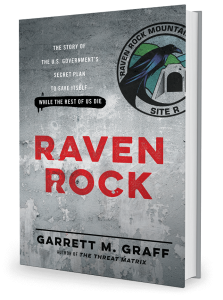Below is the text of my monthly “Editor’s Letter” in the new issue of Washingtonian.
—-
Almost as soon as the British burned Washington during the War of 1812—a story chronicled on page 68 by Adam Goodheart, one of the most engaging historians writing today—they wanted to leave, not because they were afraid of the American military but because they were afraid of the Washington summer.
August, they believed, was the peak of the “sickly season,” when “noxious vapors” rising from the swamps of Maryland and Virginia would poison them all.
The year before their march on Washington, a mysterious summer fever knocked out 500 of the 2,000 British forces in the Chesapeake. As historian Walter Lord wrote, “It was thought to be a seasonal phenomenon that the Americans could perhaps survive but certainly not a civilized people.”
Then, a few miles short of Washington, the British troops were hit by their first American thunderstorm, and while it might not have been a derecho like the June storm that hit our area, it would have been scary for anyone unused to the sudden violence possible during humid afternoons here.
They couldn’t imagine why anyone would live in this terrible place. The answer was simple, according to one of the early stonemasons who hacked and built a capital out of near wilderness: “This place is the mere whim of the President of the United States.”
When Congress, then in New York, passed the Residence Act in 1790, allowing President George Washington to handpick the site of the capital, it decreed only that the Federal District be located somewhere along the Potomac between the Anacostia River and the Conococheague Creek, 65 miles upriver.
The President made a grand show of considering various locations—riding from George Town (then a small settlement in Maryland) north through Frederick, Shepherdstown, Sharpsburg, Elizabethtown (now Hagerstown), and finally into Williamsport on the Conococheague.
Williamsport firmly believed it would be the site of the eventual capital and went to work widening its main street to 100 feet to accommodate the grand parades and processions of soon-to-be visiting heads of state.
But then—after what was probably the nation’s first listening tour—as Washington’s biographer Ron Chernow wrote, “In a proclamation that shocked nobody, he announced the choice of a site just north of Mount Vernon.”
George Washington honestly thought he was doing the nation a favor—he believed the Potomac was destined to become the “center of the union,” uniting the coast with the Ohio River Valley beyond, if only the river could be made more navigable.
In his day, the Potomac’s clean waters sparkled and teemed with life. He loved hosting al fresco dinners on Mount Vernon’s portico overlooking the water, where his pet parrots entertained dinner guests. His estate caught fish—a of fish—to feed his slaves and also salted it for export to the West Indies. In one recorded transaction in May 1771, he dropped off 679,200 herring and 7,760 shad in Alexandria for export.
Thinking of that earlier Potomac was one reason I enjoyed Emmet Rosenfeld’s heart-warming story in this issue (page 60) about fishing on and around the river today with his son.
The Potomac never turned into the shipping thoroughfare Washington assumed it would be—the Erie Canal was the first connection to the western settlements, forever reshaping New York into the commercial center DC would never be—but over the intervening years, we’ve discovered virtues of this location that George Washington and the British never imagined.
While summers here are as hot and humid as ever, with modern roads and transportation the area around, Washington has become an easy summer escape. A trip of just a few hours can take you to vineyards, beaches, parks, mountains, hikes, or out on the water itself.
Today, summer weekends seem made for visiting parks, antiques shops, plantations, and festivals; taking hikes; or going tubing—even exploring history, such as visiting George Washington’s mother’s house near Fredericksburg (page 78), admiring Maryland’s first Colonial capital in St. Mary’s (page 87), or sailing on a replica of a British Royal Navy schooner (page 89).
Along the way, if your summer journeys happen to take you through Williamsport, make sure to note how wide and regal Main Street is.



Recent Comments